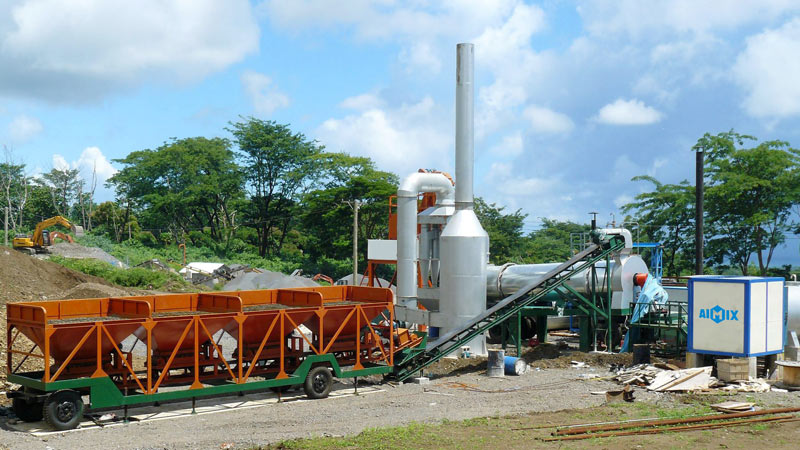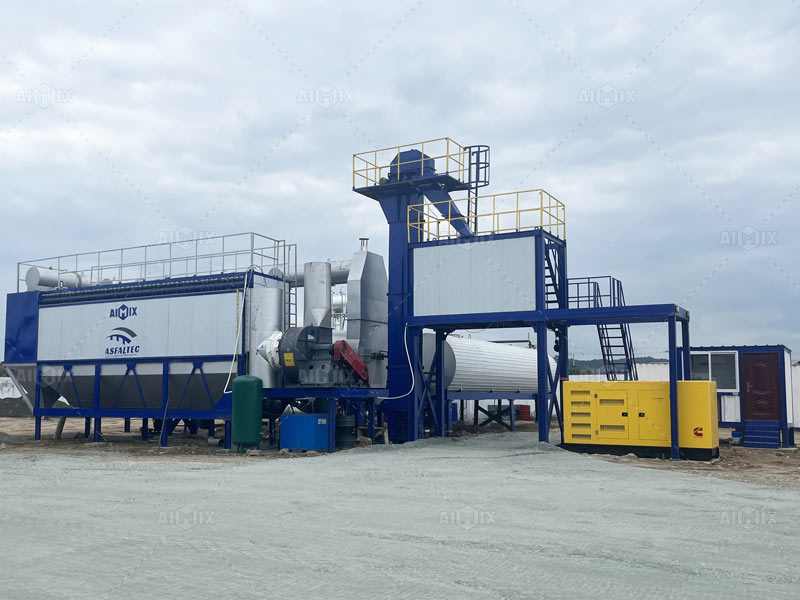What Are The Hidden Advantages Of A Mobile Asphalt Plant That Can Be Remotely Monitored?
In today's fast-paced road and bridge construction industry, efficiency and adaptability are no longer just competitive advantages—they’re necessities. As technology continues to transform infrastructure projects, mobile asphalt plants equipped with remote monitoring capabilities are gaining popularity. While many contractors focus on mobility and quick setup, the deeper value lies in their ability to provide real-time data, reduce manual oversight, and optimise operations in ways that aren't immediately visible.
If you're comparing different asphalt plant options, especially under tight deadlines or across remote locations, understanding the hidden benefits of remote monitoring can help you better assess the mobile asphalt plant price and long-term value. Let's explore what makes this combination of mobility and smart technology a powerful tool in the field.
Contents |
[edit] Real-Time Operation Insights From Anywhere
[edit] Instant Access to Key Performance Data
One of the most significant hidden advantages of remote monitoring is the ability to access critical operational data anytime, anywhere. Whether you're managing a large asphalt mixing plant fleet or a single mini asphalt plantn being able to track temperature, mix consistency, fuel consumption, and runtime from a mobile device or computer brings greater control and responsiveness.
This eliminates the need to be physically present at the plant, allowing project managers and engineers to make real-time decisions based on live performance metrics—reducing delays and preventing costly errors.
[edit] Remote Troubleshooting and Alerts
Advanced remote monitoring systems send automatic alerts if an anomaly is detected—whether it's a sensor failure, mix deviation, or temperature imbalance. Instead of halting production to investigate, technicians can log in remotely, diagnose the issue, and often solve it without even stepping on site.
This remote troubleshooting dramatically cuts downtime and enhances productivity, especially in high-mobility situations where every hour counts.
[edit] Improved Maintenance Planning and Equipment Longevity
[edit] Predictive Maintenance Instead of Reactive Repairs
Traditional asphalt mixing plant maintenance often relies on scheduled checks or waiting for breakdowns. With remote monitoring, you gain insights into wear patterns, usage history, and part performance, enabling predictive maintenance.
For example, the system may detect unusual drum vibrations or irregular burner behaviour and alert the maintenance team before a failure occurs. This proactive approach reduces emergency repair costs and extends the equipment’s operational life—something often overlooked when evaluating mobile asphalt plant price.
[edit] Maintenance Scheduling That Fits Your Workflow
Remote systems allow operators to plan maintenance during off-peak hours or in between site changes. This is especially beneficial for mini asphalt plants, which often serve small, time-sensitive projects in hard-to-reach locations. Scheduled downtime becomes predictable and less disruptive to your project timeline.
[edit] Enhanced Fuel and Material Efficiency
[edit] Monitor Consumption in Real Time
Fuel costs can be one of the largest ongoing expenses for any asphalt mixing plant. With remote monitoring, you can track fuel consumption in real time and identify inefficiencies, such as excessive idling or burner miss calibrations. This allows for adjustments that save fuel and reduce operating costs—something that adds up significantly over long-term use.
[edit] Accurate Material Usage Tracking
Whether you're working with a full-scale plant or a mini asphalt plant, accurate material tracking is essential. Remote monitoring provides detailed insights into aggregate, filler, and bitumen usage. This ensures consistent mix quality and reduces the likelihood of material waste due to overloading or inaccurate feeding.
[edit] Better Fleet and Project Management
[edit] Centralised Monitoring of Multiple Plants
For construction companies managing several projects or multiple mobile units, remote monitoring allows centralised oversight. One control room—or even a smartphone dashboard—can monitor the performance of every plant in operation, regardless of location.
This centralised visibility improves coordination between teams, ensures uniform production standards, and simplifies reporting for clients or regulatory bodies.
[edit] Faster Decision-Making in the Field
When remote monitoring is combined with GPS tracking, project managers can make informed logistical decisions in real time. If a plant finishes its production early or needs support, the central team can quickly reroute resources or adjust delivery schedules, reducing idle time and improving efficiency across the board.
[edit] Conclusion
The true value of a mobile asphalt plant goes far beyond its ability to relocate quickly. When paired with advanced remote monitoring capabilities, it becomes a smart, self-aware unit that improves operations, enhances decision-making, and lowers long-term costs.
While the mobile asphalt plant price may seem higher when these intelligent systems are included, the return on investment is substantial—especially when you factor in reduced downtime, lower fuel usage, and better material control. Whether you're investing in a large-capacity unit or a compact mini asphalt plant, remote monitoring is no longer just a premium feature—it's a strategic advantage that helps you stay ahead in an increasingly competitive construction landscape.
Featured articles and news
The Building Safety Forum at the Installershow 2025
With speakers confirmed for 24 June as part of Building Safety Week.
The UK’s largest air pollution campaign.
Future Homes Standard, now includes solar, but what else?
Will the new standard, due to in the Autumn, go far enough in terms of performance ?
BSRIA Briefing: Cleaner Air, Better tomorrow
A look back at issues relating to inside and outside air quality, discussed during the BSRIA briefing in 2023.
Restoring Abbotsford's hothouse
Bringing the writer Walter Scott's garden to life.
Reflections on the spending review with CIAT.
Retired firefighter cycles world to raise Grenfell funds
Leaving on 14 June 2025 Stephen will raise money for youth and schools through the Grenfell Foundation.
Key points for construction at a glance with industry reactions.
Functionality, visibility and sustainability
The simpler approach to specification.
Architects, architecture, buildings, and inspiration in film
The close ties between makers and the movies, with our long list of suggested viewing.
SELECT three-point plan for action issued to MSPs
Call for Scottish regulation, green skills and recognition of electrotechnical industry as part of a manifesto for Scottish Parliamentary elections.
UCEM becomes the University of the Built Environment
Major milestone in its 106-year history, follows recent merger with London School of Architecture (LSE).
Professional practical experience for Architects in training
The long process to transform the nature of education and professional practical experience in the Architecture profession following recent reports.
A people-first approach to retrofit
Moving away from the destructive paradigm of fabric-first.
International Electrician Day, 10 June 2025
Celebrating the role of electrical engineers from André-Marie Amperè, today and for the future.
New guide for clients launched at Houses of Parliament
'There has never been a more important time for clients to step up and ...ask the right questions'
The impact of recycled slate tiles
Innovation across the decades.
EPC changes for existing buildings
Changes and their context as the new RdSAP methodology comes into use from 15 June.


























